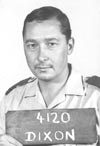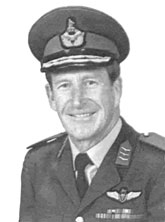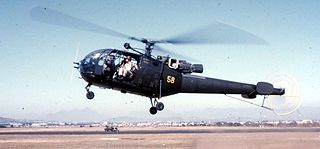
The Zimbabwe Defence Forces (ZDF) are composed of the Zimbabwe National Army (ZNA) and the Air Force of Zimbabwe (AFZ). As a landlocked country Zimbabwe does not have a navy. The most senior commander of the ZDF is General Philip Valerio Sibanda. At the time of independence after the Rhodesian Bush War, the then Prime Minister Robert Mugabe declared that integrating Zimbabwe's three armed forces would be one of Zimbabwe's top priorities. The existing Rhodesian Army was combined with the two guerrilla armies; the 20,000-strong Zimbabwe African National Liberation Army (ZANLA) forces of Zimbabwe African National Union-PF and the 15,000-strong Zimbabwe People's Revolutionary Army (ZIPRA) forces of PF-Zimbabwe African People's Union. The current manpower stands at an estimated strength of 29,000 in the Army, and an estimated 4,000 in the Air Force. Since the Rhodesian Bush War, the armed forces has been mostly involved with the suppression of non-state armed cells in a number of operations.
Wing commander is a senior officer rank used by some air forces, with origins from the Royal Air Force. The rank is used by air forces of many countries that have historical British influence.
Operation Dingo, or the Chimoio Massacre, was an attack by the Rhodesian Security Forces against the Zimbabwe African National Liberation Army (ZANLA) run camps at Chimoio and Tembue in Mozambique from 23 to 25 November 1977.

Squadron Leader Christopher John Taylor Dixon D.C.D., also known by his callsign of Green Leader, was a Rhodesian military pilot for the Rhodesian Air Force and was born in Shabani, Southern Rhodesia. He was best known for leading the Rhodesian Operation Gatling bombing raid over Zambia, which later became known as the "Green Leader Raid".

The Rhodesian Air Force (RhAF) was an air force based in Salisbury which represented several entities under various names between 1935 and 1980: originally serving the British self-governing colony of Southern Rhodesia, it was the air arm of the Federation of Rhodesia and Nyasaland between 1953 and 31 December 1963; of Southern Rhodesia once again from 1 January 1964; and of the unrecognised nation of Rhodesia following its Unilateral Declaration of Independence from Britain on 11 November 1965.

Air Marshal Norman Walsh was a senior officer in the Rhodesian Air Force and the first commander of the Air Force of Zimbabwe.

The Rhodesian Security Forces were the military forces of the Rhodesian government. The Rhodesian Security Forces consisted of a ground force, the Rhodesian Air Force, the British South Africa Police, and various personnel affiliated to the Rhodesian Ministry of Internal Affairs. Despite the impact of economic and diplomatic sanctions, Rhodesia was able to develop and maintain a potent and professional military capability.

Air Rhodesia Flight 827, operated by Vickers Viscount VP-YND 'Umniati' was a scheduled civilian flight between Kariba, and the capital Salisbury, Rhodesia, that was shot down soon after takeoff on 12 February 1979 by Zimbabwe People's Revolutionary Army (ZIPRA) guerrillas using a Strela 2 missile. The circumstances were very similar to the shooting down of Air Rhodesia Flight 825 five months earlier. As of 2022 it remains the deadliest aviation incident in Rhodesia/Zimbabwe.
Air Marshal Archibald Oliver Garfield Wilson was a Rhodesian fighter pilot who served in the Royal Air Force during World War II. He went on to become a senior commander and then Air Marshal in the Rhodesian Air Force in the 1960s and early 1970s. After retirement, he served two terms in the Rhodesian House of Assembly, in the Zimbabwe-Rhodesian Parliament in 1979, and then in the Zimbabwe Parliament in 1981–1982. He held several cabinet portfolios prior to the Internal Settlement. He resigned in 1982 to emigrate, with his wife Lorna, to Australia's Gold Coast in 1982. He became a citizen of Australia in 1988.
Fire Force or Fireforce is a variant of the military tactic of vertical envelopment of a target by helicopter-borne and parachute infantry developed by the Rhodesian Security Forces during the Rhodesian Bush War. Regiments involved included the Rhodesian Light Infantry (RLI), the Rhodesian African Rifles (RAR) and the Rhodesian Special Air Service (SAS) assisted by the Rhodesian Air Force (RhAF). The Fire Force counterinsurgency missions were designed to trap and eliminate Zimbabwe African National Liberation Army (ZANLA) and Zimbabwe People's Revolutionary Army (ZIPRA) insurgents before they could flee.
Operation Uric was a cross-border raid carried out in Mozambique by operatives of the Rhodesian Security Forces during the Rhodesian Bush War, with combat assistance from the South African Air Force. During the operation, which took place from 1 to 7 September 1979, up to 200 Rhodesian and South African military personnel attacked bridges and a major staging point for Zimbabwe African National Liberation Army (ZANLA) insurgents in Gaza Province. Along with Operation Miracle, this was one of the largest Rhodesian external operations of the war.
Air Marshal Frank Walter Mussell is a retired commander of the Rhodesian Air Force and of the Air Force of Zimbabwe.
Air Marshal Michael John McLaren was a Rhodesian senior commander in the Rhodesian Air Force. McLaren was in command of the Rhodesian Air Force from 1973 to 1977. Thereafter he was Deputy Commander of Combined Operations until 1980 when he retired from military service and worked in the oil industry. He died from cancer in Cape Town, South Africa, on 29 July 2016.

Southern Rhodesia, then a self-governing colony of the United Kingdom that is located in the now-independent Zimbabwe, entered World War II along with Britain shortly after the invasion of Poland in 1939. By the war's end, 26,121 Southern Rhodesians of all races had served in the armed forces, 8,390 of them overseas, operating in the European theatre, the Mediterranean and Middle East theatre, East Africa, Burma and elsewhere. The territory's most important contribution to the war is commonly held to be its contribution to the Empire Air Training Scheme (EATS), under which 8,235 British, Commonwealth and Allied airmen were trained in Southern Rhodesian flying schools. The colony's operational casualties numbered 916 killed and 483 wounded of all races.

(Prop) Preller Geldenhuys was a pilot in the Rhodesian Air Force. He left Rhodesia in 1982 and began a new career in South Africa. After retiring, he became an author.
Operation Placid was a Rhodesian military operation in Zambia with clandestine assistance from the South African Air Force (SAAF) during the Rhodesian Bush War. The Rhodesian Air Force planned raids against a ZIPRA camps in Zambia on the northern Rhodesian border.

On 23 December 1975, an Aérospatiale Alouette III helicopter of the South African Air Force carrying a two-man crew and four Rhodesian Army officers crashed near Cashel in Rhodesia after it collided with a hawser cable mid-flight. The accident dealt a severe blow to the Rhodesian Security Forces, then fighting bitterly against ZANLA and ZIPRA insurgents in the Rhodesian Bush War, for the officers involved were some of its best and would prove difficult to replace.
The Commander of the Zimbabwe Defence Forces is Chief of the Zimbabwe Defence Forces and the national defence organisations.

Combined Operations was a high level body established in 1977 to lead the efforts of the Rhodesian Security Forces during the Rhodesian Bush War. It was commanded by Lieutenant General Peter Walls. Prime Minister Ian Smith did not delegate formal authority to set overall policies or direct the actions of the security forces to Walls. The Combined Operations Headquarters also lacked the planning and intelligence staff needed to effectively carry out its functions. As a result, COMOPS mainly operated as an coordination body. Walls personally directed many attacks against Rhodesia's neighbours and other aspects of the war, at times independently of political control. Combined Operations was replaced by the Joint High Command following Rhodesia's transition to Zimbabwe in 1980.









